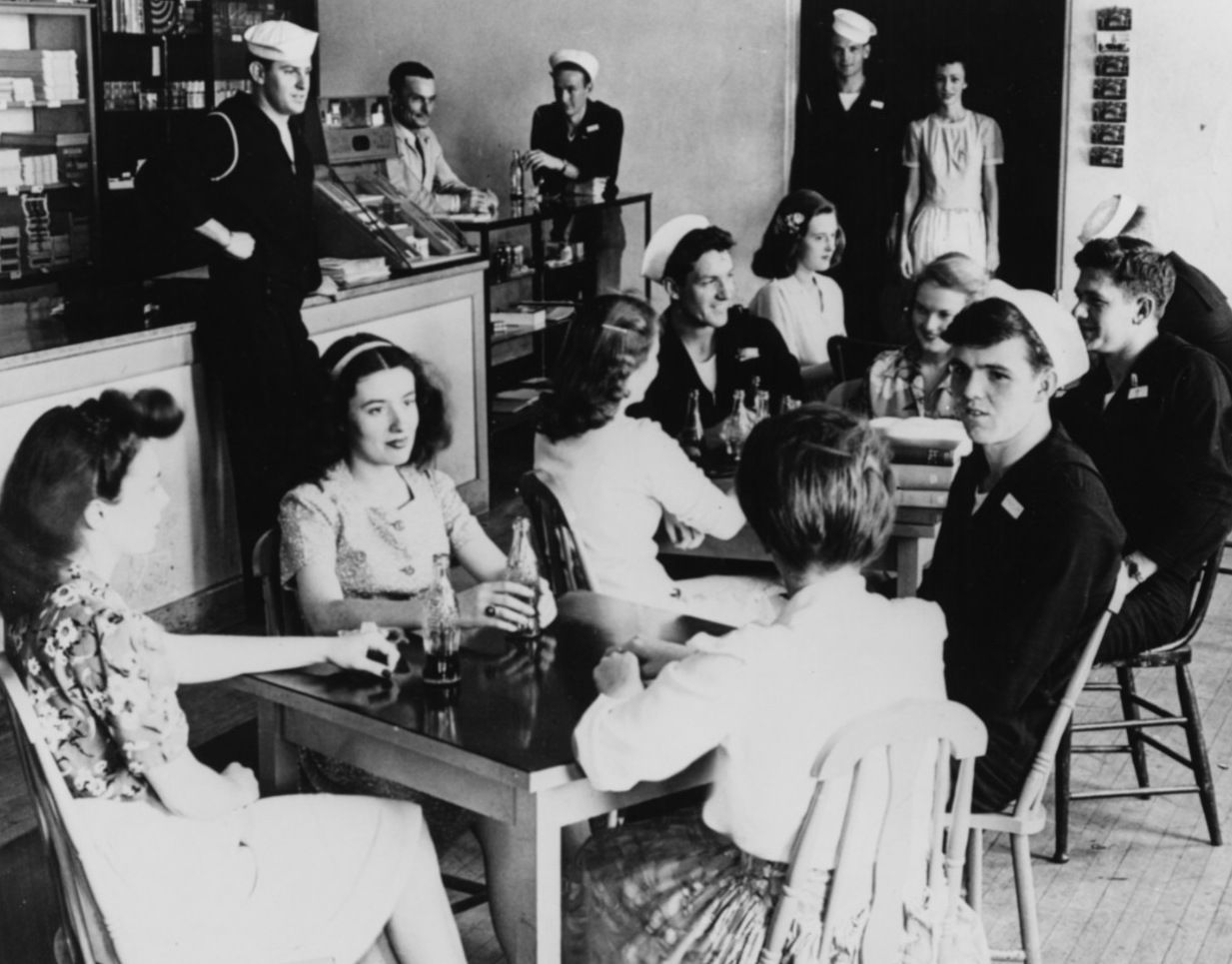The V-12 Officer Training Program
December 1942–June 1946
In the fall of 1942, the Navy was struggling to meet personnel demands. With the lowering of the draft age to 18 in November 1942, high school graduates with officer potential would soon be diverted from the classroom to the armed forces. Manpower projections revealed that the Navy could not rely on its service academies or current reserve officer training programs to supply enough officers to support a two-ocean Navy. The Navy found itself with two options: lower the number of years of college required for an officer’s commission or supply potential officer candidates with a four-year college education.
On 12 December 1942, the Navy and the Army jointly announced two new college training programs. Both programs would provide college training at no cost to high school candidates with officer potential.
The Navy program became operational on 1 July 1943 on 131 U.S. college campuses. Open to both Navy and the Marine Corps officer candidates, the V-12 program proved more popular than the Army’s program since it did not require any basic military training (“boot camp”) prior to starting college. Navy applicants did have to pass a qualifying examination, aptitude screening, and rigorous physical examination. Unlike Army officer candidates, V-12 unit members attended classes with civilian college students.
Under the Navy College Training Program (V-12), participants were placed on active duty as apprentice seamen, drawing pay as such. The government also paid their room and board. Candidates were not subject to conscription as long as they retained their enlisted ranking and kept up with their school work.
Since 1940, the Navy had been operating two other enlisted college training programs: V-7 and V-1. Students in these programs paid for two years of college at their own expense before attending a reserve midshipmen school or flight training (V-5 Naval Aviation Cadet program, later renamed V-12a). However, not enough applicants were applying to these to meet the Navy’s wartime needs. With the V-12 program, the Navy sought to consolidate the previous V-classification training plans into one cohesive program.
Curricula for V-12 officer trainees depended on their career path. Pre-medicine and pre-dental candidates followed a course schedule that conformed to that of the participating medical and dental schools. Deck officer candidates took four terms followed by four months at a reserve midshipmen’s school. Engineering candidates took eight terms of curricula followed by reserve midshipmen’s school. Supply Corps candidates took six terms of classes before attending Navy Supply Corps School at Harvard Business School. Aviation students in the V-12(a) program received two to three terms of college before heading off to pre-flight training.
Additionally, to comply with military standards, students were subject to inspection, muster, and drill, as well as weekly physical training.
Officers received midshipman school training on the following college campuses: Columbia University, Cornell University, Northwestern University, University of Notre Dame, and at the U.S. Naval Academy’s Reserve Midshipmen School.
Pre-flight schools were hosted by the following universities: University of North Carolina at Chapel Hill, University of Iowa in Iowa City, University of Georgia campus in Athens, and at St. Mary’s College in Moraga, California. Additionally, the Navy leased the grounds of the Hotel Del Monte in Monterey, California, for pre-flight training.
In its first two years, the program produced one-sixth of the officer strength of the Navy. By the program’s end on 30 June 1946, it had produced 60,000 Navy and Marine Corps officers, including 38 future admirals and 20 future Marine generals.
Some notable V-12 alumni include the U.S. Navy’s first African-American commander, captain, rear admiral, and vice admiral, Samuel L. Gravely, Jr., astronaut Scott Carpenter, television personality Johnny Carson, baseball player Al Rosen, and actors Jackie Cooper and Dennis Weaver. Former presidents George H. W. Bush and Gerald Ford were products of the aviation cadet program (V-5), but were commissioned before the V-12 program started.
—Wendy Arevalo, NHHC Communication and Outreach Division
Additional Resources
Schneider, James G. Milligan College Navy V-12 Unit: July 1, 1943–30, 1945. Bradley, IL: Broadway Printing, 1980
Navy V-12. Paducah, KY: Turner Publishing Company, 1996.



